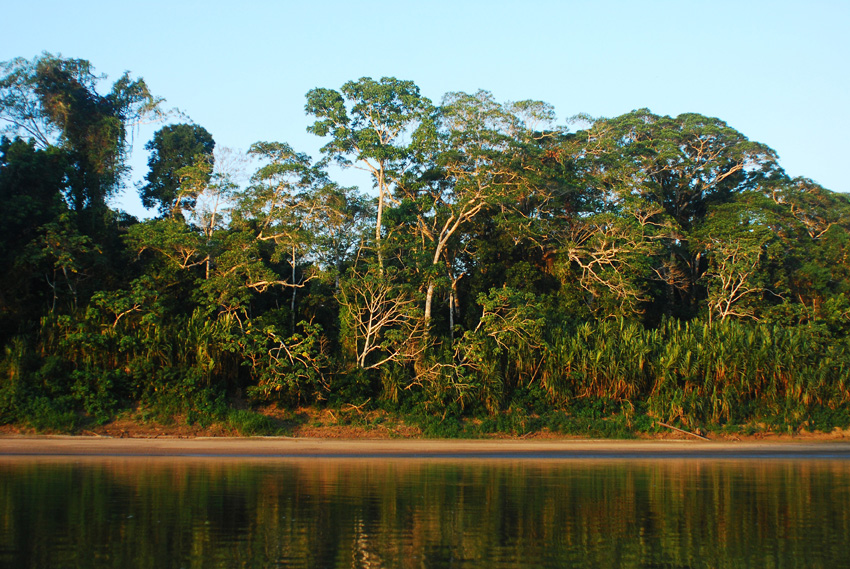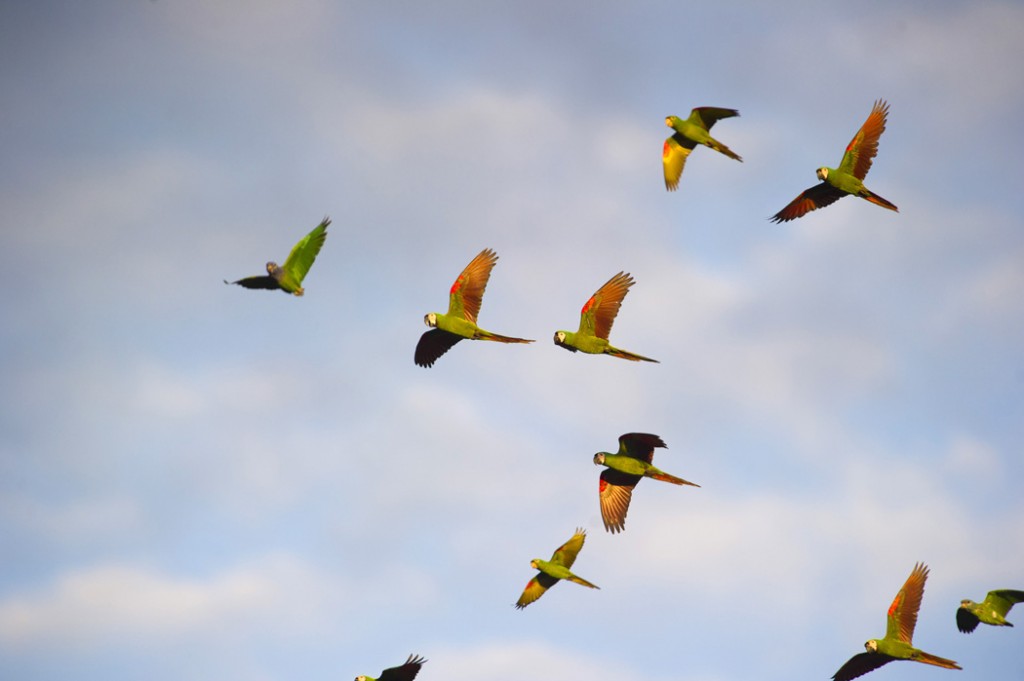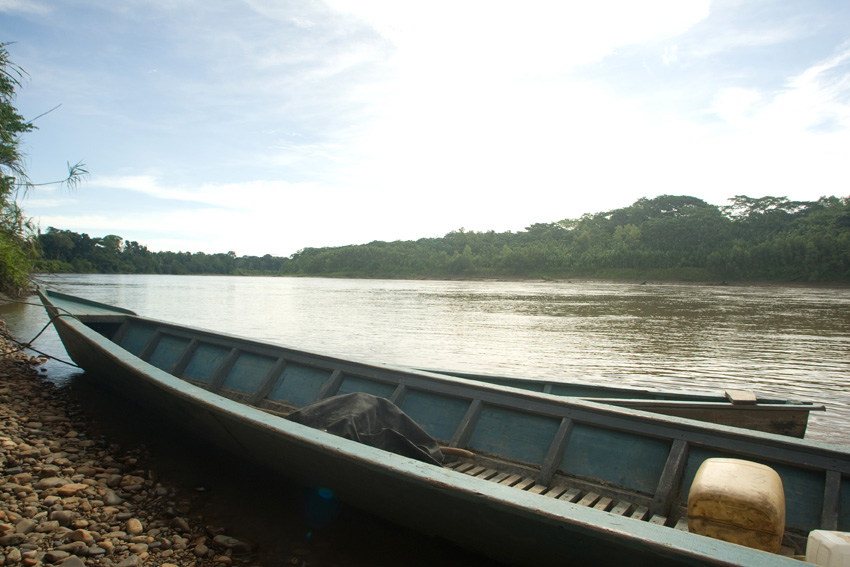Manú is a biosphere reserve located in Madre de Dios and Paucartambo in South East Peru. It (recently featured in the BBC documentary “I bought a rainforest”) is considered by UNESCO to be the most biologically diverse place on earth! This huge national park covering over 1.5million hectares is built on successive tiers of vegetation rising from 150m to 4,200m above sea-level, and it is this topographical range that has helped to create such diversity. It is the largest National Park in Peru and 40% of the park is Amazonian lowland tropical rainforest.
Manú has a very rich wildlife. Some of the statistics regarding the wildlife found in the park are quite staggering, for example more than 850 bird species (15% of all known bird species globally) and 200 species of mammals have been identified. In addition, there are 13 species of monkey, over 100 species of bat, 12 species of reptile, as well as 77 species of amphibian. Other wildlife includes jaguar, puma, ocelot, giant otter, giant anteater, giant armadillo, capybara and peccary.
Despite the huge diversity of plant species found within the park very little is still known. In the last 10 years, 1,147 plant species have been identified, but it is likely that the true number of species to be found within the park is much higher than this figure.
The inaccessibility of the park has helped to conserve it for many years. The park remains fairly inaccessible by road to this day. Then in light of its importance the area was given further protection by the Peruvian government. In 1977, UNESCO recognised it as a Biosphere Reserve and then in 1987 it was pronounced a World Heritage Site.
Permanent human habitation within the park is restricted to several small communities. There are at least four different native Indian groups: the Machiguenga, the Mascho-Piro, the Yaminahua and the Amahuaca. For the most part the forest Indians are nomadic, and subsist on root crops grown on the alluvial soils along river banks and lakes, on hunting along water courses and inside the forest, on fishing and on the collection of turtle eggs. The native people are considered part of the park’s natural system, and are left to use the park as they please while their lifestyle is considered not to threaten the park’s objectives.
Today there are a number of potential threats to the park. The main threat is the widespread invasion by illegal loggers in search of large and valuable tree species, such as mahogany. Over the past decade, neighbouring national parks have suffered and there is concern that Manú would suffer from a similar fate. Another possible threat is the discovery of mineral deposits and the price of petroleum. However, various attempts to explore for oil or build a road through the park have been blocked so far. Perhaps the greatest recent threat to the park’s integrity has been a severe cutback in the number of park guards and its infrastructure.
No one is quite sure what the long term prospects are for Manú National Park, but to lose such an important natural wonder would surely be a terrible indictment on the human race!
Blog by
Will Rist
Peru Travel Consultant








